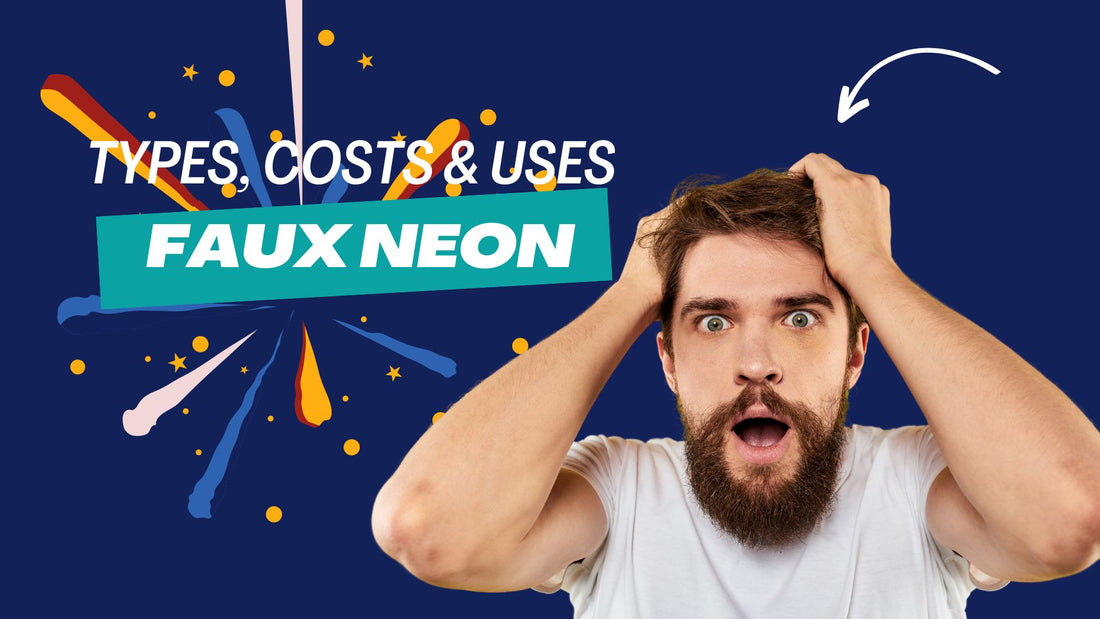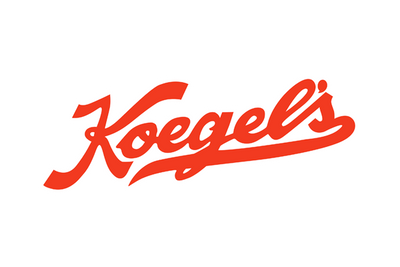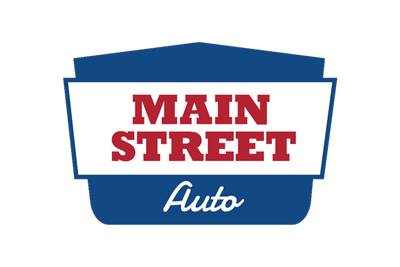
What are Faux-Neon Signs? - Types, Costs & Uses
Digital Team SupportShare
Faux-neon, also known as LED neon signs, is a term that’s become popular lately. These are the new generation of signs that look like traditional neon signs but with extra benefits. This article will go in-depth on faux-neon signs, their advantages, how they’re made, and their cost.
- Faux-neon signs mimic the visual look of traditional glass neon signs.
- LED neon signs are safer, brighter, more durable, and cheaper.
- Faux-neon can be used for business signage and also decor.
Custom neon signs are also available for business advertising, home decor, and special events. Their personalized designs capture the personality and vibe of your celebrations and spaces.
What is Faux-Neon?
As the name implies, faux-neon replicates the traditional neon sign. The modern manufacturer uses LED neon flex instead of the traditional glass neon tubing, miming neon's visual look. These signs have changed the way businesses and individuals use signs, and they are a more versatile and energy-efficient alternative to traditional neon signs. You can order a custom sign for a food truck, birthday, or Christmas gift with exceptional customer service and great-looking signs.
Note: Faux-neon and LED neon signs are used interchangeably throughout this article.
Faux-Neon History
Faux-neon has come a long way since LED signs were introduced in the 1990s. The first generation consisted of simple rope lights. But the third and fourth generation of faux-neon signs is a technological giant leap, with various shapes, color options, and even color-changing patterns. These advancements include faux neon letters, which use translucent vinyl wrapped around glowing white LEDs to create a rainbow of colors, with stroke widths from 12 to 15mm wide.

Faux-Neon vs Traditional Neon Signs
One of the most common questions potential buyers ask is whether a traditional neon sign is better than a faux-neon sign. The answer depends on your value for money—energy efficiency or the classic neon look.
Traditional neon signs have been a favorite among business owners for their bright lights and visually appealing designs. But an LED faux-neon sign uses less power and has more colors. They can be bent tighter, with more shapes and designs. You can also create custom neon signs with specific text, colors, and features for personal use, as well as business signage, home decor, events, and more.
An LED faux-neon sign is the clear winner for energy efficiency, using less power than glass neon tubes. Their versatility and energy efficiency are why faux-neon light signs have surpassed traditional neon signs in popularity.
Faux-Neon for Consumers
Faux-neon signs are not just for businesses. They’re also for home decor. With their bright lights and 3D effect, they make a statement and add a unique touch to any room. Sellers have excellent service, personalized attention, and fast turnaround.
About LED Lights
The humble LED light is the backbone of a faux-neon sign. LEDs, or Light-Emitting Diodes, are semiconductors that emit light when an electric current passes through them. They’re known for their efficiency, longevity, and versatility, so they’re perfect for lighting.
Faux-Neon Benefits
Faux-neon has several advantages over traditional neon signs. These are:
- Low to No Maintenance Costs: LED lights have a longer lifespan than neon tubes, and less replacement is needed. Read about the maintenance.
- Durable: LED neon signs are made of heavy-duty materials, which are more durable and suitable for commercial use. Read more about how they are made.
- Cost-Effective: The initial cost of LED neon signs is lower than that of neon signs. Plus, their energy efficiency means lower operating costs.
- Bright Glow: LED lights have bright and vibrant glow-like neon signs.
- Energy Efficient: LED lights use less power than neon tubes and save energy big time.
- Safety: LED signs operate at a lower voltage and are safer than traditional neon signs. Read more about their safety.
- Environmentally Friendly: LED lights are more eco-friendly than neon tubes containing harmful gases.
- Color Options: LED lights have various colors and customization options.
How to Make a Faux-Neon Sign
Making a faux-neon sign involves several steps. First, the design is sketched out. Then, a material like PVC or acrylic is chosen. The material is carved into the desired shape and lined with LED lights to achieve the neon effect.
Faux-Neon Sign Cost
The cost of a faux-neon sign can vary widely, depending on the size, complexity, and materials used. However, they are generally more affordable than traditional neon signs, perfect for small businesses and homeowners on a budget. We have written another blog post on the cost of neon signs.

How to Spot a Faux-Neon Sign
A faux-neon sign is hard to tell from a real neon sign, but here are a few giveaways. A faux-neon sign uses PVC or acrylic instead of glass tubes. It usually has a UL certification mark, which means it’s been tested and meets safety standards.


Faux-Neon Sign Alternatives
While faux-neon signs have many benefits, there are also alternatives. These are lightboxes and backlit signs, which use LED lights to illuminate printed images.
Buying a faux-neon sign is a cost-effective and versatile alternative to traditional neon signs. They’re perfect for businesses looking for energy-efficient signage and homeowners who want to add a unique touch to their decor. Knowing the benefits and how they’re made will help you decide if a faux-neon sign is for you.
Faux Neon Sign FAQ
What is a faux neon sign?
A faux neon sign mimics the look of traditional neon using alternative technologies. It often uses LED lights encased in a translucent cover to resemble neon tubes. Compared to real neon, faux neon is more energy-efficient and durable and offers more design options.
What’s the alternative to neon signs?
The alternative to glass neon signs is LED technology, which is more energy efficient, lowers heat emissions, and has a longer lifespan. That’s why LED signs are famous for both commercial and residential use. They are also more accessible and safer to handle and can be made in various colors and designs.
Can I make my neon sign?
We can make a custom neon sign. A custom neon sign, including design, logo, colors, fonts, and advanced color-changing options, can be entirely bespoke.
Customers can create a fully custom neon sign in 24 colors and 1000+ fonts with a custom design.
If you want a custom LED neon sign, fill out our custom quote form.
Why have people stopped using neon signs?
People stopped using neon signs and neon lights because of the maintenance involved, the fragility of the glass tubes, and the higher energy consumption compared to modern alternatives like LED light signs. The complex process and need for specialized installation also contributed to the decline of neon sign usage.
Why is neon not popular anymore?
Neon’s popularity waned as LED signs became more advanced. LEDs offer brighter, more energy-efficient, and eco-friendly options that are cheaper to produce and have more applications. They’re also easier to install and customize, which is why customers went away from traditional neon.
Do other gases glow like neon?
Other noble gases, such as argon, krypton, and xenon, can glow in gas discharge lamps and produce different colors. When mixed with phosphor coatings or neon, various colors can be created for multiple lighting applications.







